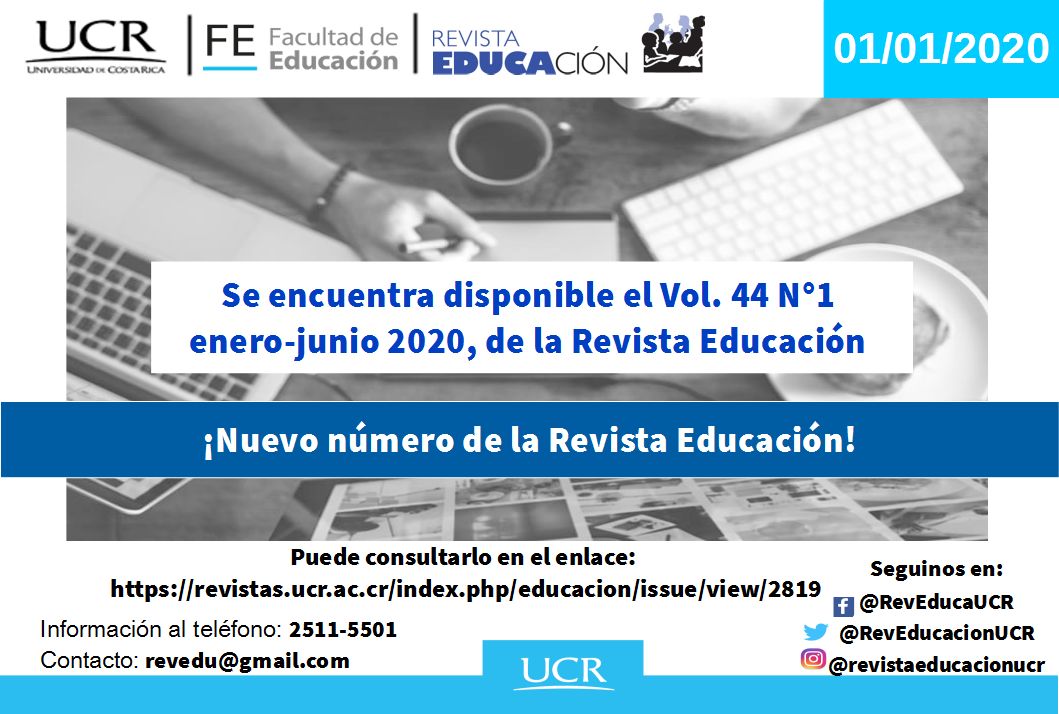Resumen
Este artículo analiza la comprensión de los estudiantes universitarios del inglés como segundo idioma con respecto a las reglas de pronunciación de adjetivos en inglés que finalizan en -ed. El objetivo es determinar la medida en que los estudiantes pueden seguir tanto las reglas de pronunciación como las excepciones de las inflexiones que finalizan en -ed cuando dichas palabras se utilizan como adjetivos. Este estudio cuantitativo presenta datos recopilados de una prueba de escogencia múltiple de 20 preguntas. Un total de 61 participantes realizó la prueba. Los resultados generales muestran que los estudiantes obtuvieron notas bajas (M = 7.33, SD = 1.51, n = 61 para adjetivos que terminan en -ed que representan una excepción a la regla) con respecto al seguimiento de patrones de pronunciación con reglas establecidas. En promedio, los estudiantes lograron pronunciar los adjetivos que finalizan con -ed correctamente como /ɪd/, el 8,2% de las veces, seguido por /d/ (7.31%) and /t/ (6.49%). Los estudiantes obtuvieron la puntación más baja con respecto a la pronunciación atípica de los adjetivos participios. El autor propone realizar cambios al currículum y el diseño de los materiales además de evaluar prácticas actuales en el aula con el fin de mejorar la pronunciación del estudiante. Por último, el autor enfatiza la necesidad de realizar más estudios enfocados en la pronunciación y percepción auditiva para alcanzar dicha meta.
Citas
Akmajian, A., Demers, R., Farmer, A., and Harnish, R. (2010). Linguistics: An Introduction to Language and Communication. United States of America: The MIT Press
Bassetti, B. and Atkinson, Nathan. (2015). Effects of orthographic forms on pronunciation in experienced instructed second language learners. Applied Psycholinguistics, 36(1), 67-91. doi: http://dx.doi.org.ezproxy.sibdi.ucr.ac.cr:2048/10.1017/S0142716414000435
Brown, D. (2015). Teaching by principles: An interactive approach to language pedagogy. White Plains, NY: Longman.
Caballero, D. and Rosado, N. (2018). Neurolinguistic Programming and Regular Verbs Past Tense Pronunciation Teaching. English Language Teaching, 11(11), 1-18. doi: https://doi.org/10.5539/elt.v11n11p1
Cardoso, W. (2018). Learning L2 pronunciation with a text-to-speech synthesizer. In P. Taalas, J. Jalkanen, L. Bradley & S. Thouësny (Eds), Future-proof CALL: language learning as exploration and encounters – short papers from EUROCALL 2018 (pp. 16-21). France: Research-publishing.net. doi: https://doi.org/10.14705/rpnet.2018.26.806
Celce-Murcia, M., Brinton, D., and Goodwin, J. (2016). Teaching Pronunciation. Cambridge: Cambridge University Press
Davila, A. M. (2013). Spanish speakers' reading production of English past tense inflectional morpheme –ed (Masters Dissertation) Southern Illinois University Carbondale, Illinois, United States of America. Retrieved from https://search-proquest-com.ezproxy.sibdi.ucr.ac.cr/docview/1475221589?accountid=28692
Gilakjani, A. P. (2011a). A Study on the Situation of Pronunciation Instruction In ESL/EFL Classrooms. Journal of Studies in Education, 1(1) 1-15. doi: https://doi.org/10.5296/jse.v1i1.924
Gilakjani, A. P. (2011b). Why is pronunciation so difficult to learn? English Language Teaching, 4(3), 74-83.
Hadfield, J. and Hadfield, C. (2011). Oxford Basics: Introduction to Teaching English. Cambridge: Cambridge University Press.
Harmer, J. (2001). The practice of English language teaching. England: Longman.
Kelly, G. (2000). How to teach pronunciation. England: Longman.
Kolln, M., and Funk, R. (2011). Understanding English Grammar. New York: Longman.
Yaowaratana, K., and Rungruang, A. (2018). How Thai EFL Learners Deal with English Regular Past Forms: A Case Study of a Speech Sound Perspective. English Language Teaching, 11(7), 1-21.
Marks, J., and Bowen, T. (2012). The book of pronunciation: proposals for a practical pedagogy. Peaslake: Delta Publishing.
Nation, P. and Newton, J. (2009). Teaching ESL/EFL listening and speaking. New York: Routledge.
Plag, I. (2003). Word-Formation in English (Cambridge Textbooks in Linguistics). Cambridge: Cambridge University Press. doi: https://doi.org/10.1017/CBO9780511841323
Richards, J., and Schmidt, R. (2010). Longman dictionary of language teaching and applied linguistics. Oxfordshire, England: Routledge.
Roach, P. (2010). English phonetics and phonology: A practical course. Cambridge: Cambridge University Press.
Thornbury, S. (2005). How to teach speaking. England: Longman.







